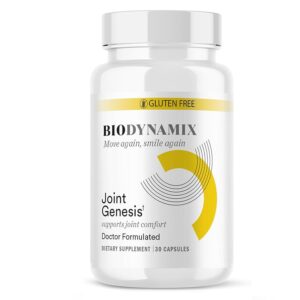Joint supplements are among the most popular wellness products worldwide, especially for adults over 40 who experience stiffness, mobility challenges, or age-related discomfort. If you’ve ever purchased a glucosamine, collagen, or hyaluronic acid supplement, one of the first questions that likely came to mind was: How long until I feel results?
The truth is that joint health supplements are not “instant painkillers.” They work gradually by nourishing cartilage, supporting synovial fluid, and reducing inflammation over time. In this article, we’ll explore a week-by-week timeline of what you can realistically expect when taking joint supplements consistently.
We’ll also look at the factors that influence results, the ingredients that act faster than others, and expert-backed tips for maximizing benefits.
Why Joint Supplement Timelines Matter
Supplements like glucosamine, chondroitin, MSM, collagen, and turmeric are not pharmaceutical drugs. Instead of providing immediate relief, they rebuild and support joint tissues. This means results often depend on:
- Consistency of daily use
- The severity of joint damage (mild stiffness vs. long-term arthritis)
- Age and activity level
- Diet, hydration, and lifestyle factors
- The specific formula and ingredient dosages
Understanding the typical timeline helps set realistic expectations, avoid disappointment, and stay motivated long enough to experience noticeable improvements.
Week 1: Early Adaptation Phase
During the first week, most people will not notice dramatic changes in pain or mobility. Instead, your body begins absorbing the nutrients from the supplement.
- What’s happening inside your body: Ingredients like hyaluronic acid may start hydrating cartilage, while turmeric curcumin begins modulating inflammatory pathways.
- What you might feel: Slight digestive adjustments (if any), but usually no pain relief yet.
- Key takeaway: Patience is essential—joint supplements are building a foundation for long-term results.
Weeks 2–3: Subtle Relief and Less Morning Stiffness
By the second or third week, many people begin noticing small changes:
- Reduced morning stiffness: Getting out of bed feels a little easier.
- Slightly smoother movement: Knees or hips may not “creak” as much.
- Early energy improvements: Because joint pain is less draining, some feel more motivated to walk or exercise.
At this point, anti-inflammatory ingredients like Boswellia and turmeric may kick in faster, providing relief from swelling and discomfort.
However, if you’re taking structural joint nutrients (like glucosamine, chondroitin, or collagen), the process of rebuilding cartilage is still in its early stages.
Weeks 4–6: Noticeable Improvements in Comfort and Flexibility
By the one-month mark, many joint supplement users report clearer benefits:
- Less frequent joint pain during daily tasks like climbing stairs or bending.
- Better flexibility: Turning, twisting, or reaching feels more natural.
- Improved range of motion: Exercises like squats or lunges may feel less restricted.
- Fewer flare-ups: Inflammation episodes become shorter and less severe.
This stage is when collagen peptides and hyaluronic acid start making an impact on cartilage hydration and synovial fluid viscosity, helping joints “glide” more smoothly.
Weeks 7–8: Structural Benefits Take Hold
After two months of consistent supplementation, long-term changes become more noticeable.
- Cartilage support: Glucosamine and chondroitin are believed to protect and repair cartilage surfaces.
- Stronger connective tissues: Collagen helps ligaments and tendons stay resilient.
- More active lifestyle: Many users report returning to hobbies like gardening, walking, or light sports with less discomfort.
At this stage, consistency is key. Stopping the supplement too early may cause progress to plateau or reverse.
Weeks 9–12: Peak Results for Most Users
By three months, joint supplements typically deliver their maximum visible benefits. Clinical studies often measure results at this point because it reflects the most reliable improvements.
- Significant reduction in pain intensity (compared to baseline).
- Increased mobility and flexibility for daily and recreational activities.
- Greater independence: Tasks like grocery shopping, playing with grandchildren, or traveling feel more manageable.
- Sustained comfort: Less reliance on over-the-counter pain relievers.
For some individuals with severe joint degeneration, results may continue improving beyond 12 weeks, but for many, this is when the benefits plateau.
Long-Term Use: Maintenance and Protection
Even after three months, it’s important to continue supplementation if you want to maintain joint comfort and prevent regression. Stopping abruptly may cause stiffness to return within weeks.
Think of joint supplements as ongoing nutritional support for your cartilage, synovial fluid, and connective tissues, not as a one-time fix.
Factors That Influence How Fast You See Results
Not everyone responds at the same speed. Several factors determine whether you feel results in weeks or months:
- Type of supplement – Turmeric and Boswellia act faster than glucosamine or collagen.
- Dosage consistency – Skipping doses reduces effectiveness.
- Severity of joint damage – Early-stage discomfort responds quicker than advanced arthritis.
- Lifestyle habits – Exercise, hydration, weight management, and anti-inflammatory diets amplify results.
- Age and metabolism – Younger users may experience faster tissue repair.
How to Maximize Your Results
To get the most from your joint supplement, follow these evidence-based tips:
- Take supplements daily without missing doses.
- Combine with a balanced diet rich in omega-3s, antioxidants, and lean protein.
- Stay active with low-impact exercises like swimming, cycling, or yoga.
- Maintain healthy weight to reduce joint load.
- Work with your doctor to combine supplements with other supportive therapies if needed.
Final Thoughts: Patience Brings the Payoff
So, how long until you feel joint supplement results? For most people:
- Weeks 1–3: Subtle improvements (less stiffness).
- Weeks 4–6: Noticeable reduction in pain and better mobility.
- Weeks 7–12: Stronger structural support and peak results.
Joint supplements are not quick fixes, but with patience, consistency, and the right formula, they can help you move more freely, reduce discomfort, and regain confidence in your body.
If you’re starting today, think of the next 12 weeks as an investment in your long-term joint health. Your future self will thank you.

